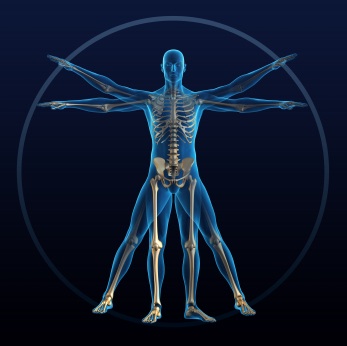A Guide for Physicians
and Other Healthcare Providers
Psychosomatic Disorders -
- A Primary Care Perspective
Psychosomatic disorders are common causes of visits to physicians of all specialties but mostly to primary care providers. The spectrum of these disorders ranges from mild stress-related headaches to severe conversion reactions with paralysis or incapacitating chronic pain. The symptoms are often bizarre and difficult to diagnose often leaving clinicians puzzled while patients are still suffering.
Multiple tests are often ordered in an attempt to make a physical diagnosis. These tests are usually normal, but can sometimes show incidental abnormalities unrelated to the patients symptoms, but nevertheless further suggest to the patient that there is something wrong. This results in further testing which usually isn’t revealing.
Ultimately the doctor is usually left with an unhappy, worried patient whose symptoms are real but no diagnosis can be made that fits any known medical condition. This is usually because…
(a) We haven’t thought of all the possibilities (the physician’s nightmare that s/he may be missing something).
(b) The patient’s illness is currently too early in its course to be diagnosable and will eventually become evident on close follow up, as in certain infections or neurologic diseases.
(c) The patient has an illness that requires a clinical diagnosis that will not be diagnosable by blood work, x-rays or other technological investigations (e.g., chronic fatigue syndrome, fibromyalgia, etc.).
(d) The patient is malingering (deliberately misleading the doctors for personal gain).
(e) The patient has a psychosomatic or stress-induced psycho-physiologic disorder.
Many patients with psychosomatic disorders also have physical disorders, which may or may not have been induced by stress. This sometimes results in a very complicated situation in a patient who has multiple symptoms and who also has one or more complicated physical illnesses. It then becomes a real challenge to the clinician to try to figure out which symptoms are due to the physical disease and which are due to or aggravated by the psychosomatic disorder.
You also have to recognize and never forget the fact that psychosomatic patients can get serious physical diseases just as often if not more so than other patients. Because of this, you can never be complacent about one of these patients who develop new symptoms or even recurrences of old symptoms. If you are too dismissive in these situations, you will eventually, almost certainly, miss something important.
It’s also wise to remember when dealing with psychosomatic patients, that their symptoms are real. We may not always understand the neurophysiologic basis for these symptoms. The biopsies are normal, the x-rays and MRIs are normal, the blood tests are normal, but the symptomatology is real. One theory is that this may be caused by a currently non-diagnosable anomaly in the hypothalamus or thalamus precipitating a sensory disorder or an abnormal interpretation of certain stimuli resulting in real symptoms. Another possibility is that prior severely stressful experiences have resulted in hyper-stimulated neural pathways (or disabled inhibitory pathways) in the brain resulting in abnormal continuous or episodic discharges of neurons causing these sensory anomalies. Perhaps these anomalies are controllable by cortical functions at times, but sometimes they are not.
Presenting such theories to patients may be helpful in showing that you believe their symptoms are real and that psychiatric consultation may be helpful in learning how to control these processes.
However, some would say that this would provide justification and rationalization to the patient, who may then feel that it’s okay to continue to have the symptoms, i.e., enabling them to legitimize and therefore continue their disability.
There may be some unconscious “secondary gain” that perpetuates or aggravates certain symptoms, such that patients don’t want to let go of them. This may be a greater amount of attention received from family members if they are ill, or a fear that a loved one will leave them if they become too independent. Pending personal injury and/or disability-related lawsuits often tend to perpetuate symptoms as well.
Whatever theory you believe, it’s important to recognize that patients who have this disorder are not “faking it”, and even more importantly, they don’t want to be perceived by others as faking it, which further lowers self esteem, increases anxiety, depression and anger, and probably perpetuates the problem. The tendency on the part of physicians when dealing with these patients is to walk away from them, further isolating them and adding to their frustration and their growing anger with a medical profession that has not been able to help them. Patients then often reach out to alternative therapies, which may temporarily help because at least someone is paying attention and listening to them.
Treatment should include professional psychiatric support as well as continuing reassurance from their medical doctor that their symptoms are not due to any life threatening illness. Furthermore, they need to know that someone believes them and that there is hope for improvement. Many of these patients need a certain amount of time to discuss these issues with someone who will listen to them and take them seriously.
The primary care doctor can be instrumental in guiding patients with psychosomatic disorders away from costly or invasive examinations or re-examinations or even surgeries unless it becomes clinically evident that these procedures are necessary. If you have been concerned and caring in your treatment, the patient will trust your judgment. If you have been too dismissive and nonchalant, they will not, and their symptoms will likely become worse. No matter what, they need to see that you are concerned for their welfare. Only then can you provide an ongoing basis for proper care and treatment.
This page was last updated on July 22, 2009.
From "Psychosomatic Disorders" to "Types of Patients"
From "Psychosomatic Disorders" to "HomePage"
Disclaimer | Privacy Policy | Copyright | Sitemap | Contact | Comments











